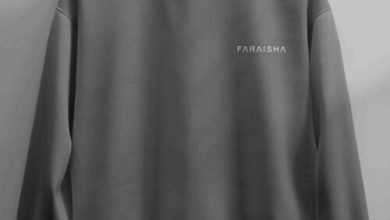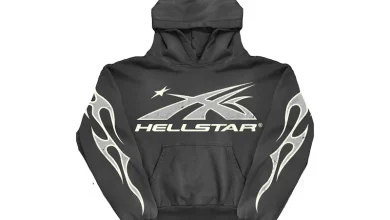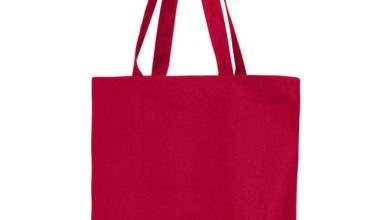How to Spot Genuine Essentials Clothing in UK Stores

Essentials Clothing: Essentials by Fear of God has quickly become a staple in the fashion world, thanks to its minimalist designs, high-quality materials, and strong reputation within streetwear culture. However, with its rising popularity, the market has seen an increase in counterfeit products. As a result, it’s important to know how to spot genuine Essentials clothing when shopping in UK stores. This guide will walk you through the key elements to look out for to ensure you’re buying authentic items.
1. Check the Labels and Tags
The first and most obvious indicator of genuine Essentials clothing is the label. Fear of God’s Essentials line is known for its clean, well-crafted branding, which is present in the form of a label or tag inside the garment. Genuine Essentials products typically feature a rectangular or square tag with a bold “Essentials” logo, printed in a clear and consistent font. The tag will also indicate the garment’s size, care instructions, and manufacturing details.
A key point to look out for is the stitching around the label. In authentic products, the stitching is always neat and even, without any fraying or irregularities. Counterfeit items, on the other hand, may have poorly stitched or uneven tags, often with threads that can easily come loose. Be sure to check for any discrepancies in font style, spacing, or overall design, as counterfeit brands often try to replicate this branding but can’t get the details quite right.
2. Examine the Quality of the Fabric
Essentials clothing is known for its premium fabrics, which feel soft to the touch and are durable. The brand focuses on using high-quality cotton, fleece, and wool blends, giving each piece a substantial weight and a luxurious feel. When shopping for Essentials items in UK stores, always pay attention to the fabric.
Genuine Essentials hoodies, t-shirts, and sweatpants have a plush, soft feel, and the material should not be overly stiff or rough. Counterfeit items often use lower-quality fabrics that may feel cheap or scratchy, with noticeable differences in texture. Additionally, genuine Essentials clothing tends to retain its shape and softness even after washing, while fakes may lose their form or feel uncomfortable after a few wears.
To test the authenticity of the fabric, feel the garment and see if it feels substantial and well-made. Fake Essentials items tend to use thinner, less durable materials that can feel flimsy and lose their shape over time.
3. Inspect the Stitching and Craftsmanship
Another sign of genuine Essentials clothing is the stitching. Fear of God is known for its attention to detail, and this is reflected in the flawless stitching found in every piece of Essentials clothing. Genuine garments will have neatly stitched seams with no loose threads, uneven stitching, or visible holes. The stitching should be uniform and discreet, with no excessive or noticeable threads hanging out.
Counterfeit items, however, often have stitching that is irregular or poorly executed. Common flaws include uneven stitching, loose threads, and stitching that looks rushed or poorly finished. If you notice any of these issues, it’s a red flag that the garment may not be authentic.
Check areas like the hem, neckline, and sleeves, as these are common places where counterfeiters often cut corners. Authentic Essentials pieces will have neatly hemmed edges and no signs of wear or fraying.
4. Look at the Fit and Shape
Essentials clothing is known for its relaxed, oversized fits, which are designed to offer a comfortable, modern silhouette. However, the fit of the garment should still look intentional and well-proportioned. Genuine Essentials pieces tend to have a balanced fit, with sleeves and body lengths that suit the design of the piece.
If the hoodie, t-shirt, or jacket appears too tight or too baggy in a way that seems unnatural, it could be a counterfeit. The shape should not be distorted, and the garment should hang naturally on the body without looking oversized sloppily or disproportionately. Authentic items will have a consistent cut and tailored construction, while fakes may appear misshapen or poorly fitted.
5. Verify the Colour and Finish
Authentic Essentials pieces often feature neutral, understated colors like black, grey, beige, and olive, in keeping with the brand’s minimalist aesthetic. The colors should be deep and consistent, with no visible inconsistencies or fading. If you notice any color discrepancies or patches where the dye seems uneven, this could indicate a fake.
Additionally, pay attention to the finish of the clothing. Genuine Essentials clothing has a smooth, even finish with no visible blemishes or signs of poor dyeing. Counterfeit products may have visible streaks, uneven dye jobs, or inconsistent finishes, all of which point to poor manufacturing standards.
6. Check the Packaging
When buying Essentials clothing from a reputable UK store, the packaging should be as premium as the product itself. Authentic Essentials items typically come in high-quality packaging, such as branded dust bags or boxes. The packaging will feature the brand’s logo and should feel sturdy and well-constructed. It may also include additional tags or a care booklet.
Fake products, on the other hand, are often shipped in poor-quality packaging with no branded elements. The lack of attention to detail in the packaging can be an indication that the item is counterfeit. Be cautious if the packaging appears flimsy or generic, or if the item is simply handed over to you without proper wrapping or protective covering.
7. Purchase from Reputable Retailers
Perhaps the best way to ensure you’re buying genuine Essentials clothing is to shop from well-known and authorized retailers. UK stores like Selfridges, Farfetch, and End Clothing are reputable sources for authentic Essentials items. These retailers only stock genuine products, and their customer service teams can assist with any questions about authenticity.
When buying from online retailers, make sure they have good reviews and a solid reputation for selling authentic items. Avoid purchasing from unauthorized websites or marketplaces like eBay or other discount sites, as counterfeit Essentials clothing is often sold through these channels.
Conclusion
Buying genuine Essentials clothing in UK stores requires attention to detail. By checking the labels, fabric quality, stitching, fit, color, and packaging, you can avoid purchasing counterfeit items and ensure you’re getting the authentic product. Always shop from reputable retailers and be aware of the signs of fakes. With these tips in mind, you can confidently add genuine Essentials pieces to your wardrobe, knowing that you’re investing in high-quality, stylish garments that will stand the test of time.




